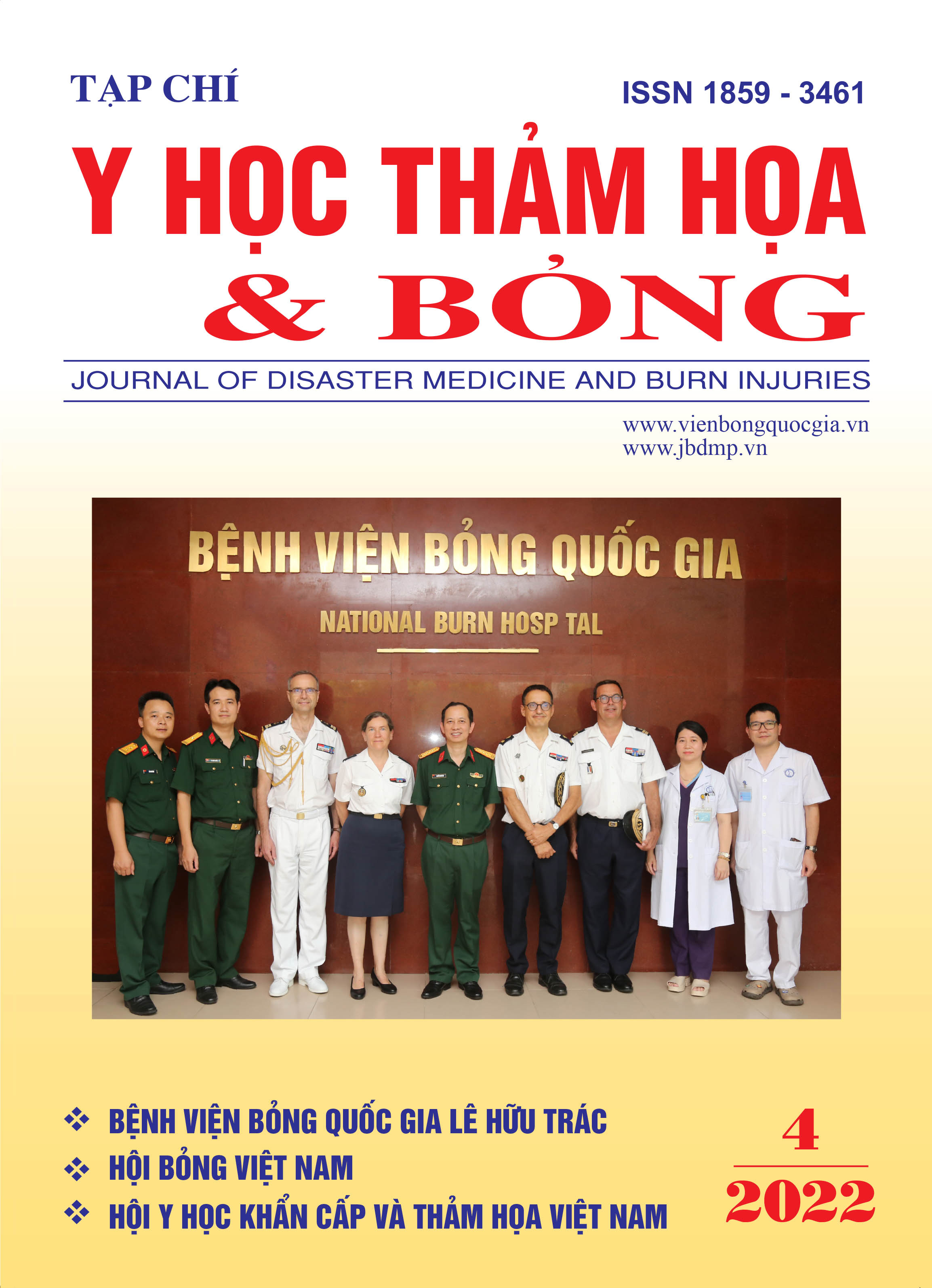Evaluation the results of the middle and lower facial skin tightening by sub-SMAS procedure
Main Article Content
Abstract
This paper aims to evaluate the results of the middle and lower facial skin tightening by the sub-SMAS procedure. The study was carried out on 9 women, 37 - 63 years old with aging, sagging skin in the middle and lower layers of the face who underwent facelift surgery at the Center of Plastic, Aesthetic, and Reconstructive Surgery, National Burn Hospital.
The results: Surgery time was 2 - 3 hours under endotracheal anesthesia. 100% no damage to facial nerve branches, the incision healed, there was mild to moderate swelling, no infection, a few cases of mild bruising, and no skin flap necrosis. Facial skin was instantly stretched. There were satisfactory aesthetic results (1-6 months after surgery) in the follow-up of 9/9 patients. In the long-term aesthetic results (after 6 months) follow-up: 3/9 patients showed great results. All of the patients were satisfied with their incision location, scar quality, tension as well as the natural contours of the face.
FACS fell from level 3 - 4 to 0 shortly after physical therapy and stabilized at level 1 - 2. The FOS scores increased sharply from 0 - 25 points to 86 - 100 points and stabilized at 96 points average. The experts also rated the cosmetic result as good through the FOSE score of level 4 (maximum). Thus, mid and subfacial skin tightening with the sub-SMAS surgical method is a safe and effective method that is reasonably applicable to patients with aging, moderate to severe sagging faces.
Article Details
Keywords
facelift, Sub-SMAS
References
2. Mendelson B.C., Wong Ch.H. (2013), Anatomy of the aging face, In: Aesthetic Surgery of the Face., 6(1):79-91.
3. Mendelson B., Muzaffar A.R., Adams W.P., et al. (2001), Surgical Anatomy of the Midcheek and Malar Mounds, Plastic and Reconstructive Surgery., 110(3):885-96.
4. Shiffman M.A. (2007) Facial aging: A clinical classification, Indian Journal of Plast. Surg.; 47(2): 178-180, DOI: 10.4103/0970-0358.37763
5. Jacono A.A., Rousso J.J., (2015) Algorithmic Approach to Multimodality Midfacial Rejuvenation Using a New Classification System for Midfacial Aging, Clin. Plast Surg.; 42:17-32, http://dx.doi.org/10.1016/j.cps.2014.08.002.
6. Mendelson M.C.(1995) Extended Sub-SMAS dissection and Cheek Elevation. In: Clinics In Plastic Surgery; 22(2): 325-338.
7. Baker D.C. (2001), Minimal incision rhytidectomy (short scar facelift) with lateral SMASectomy: evolution and application, Aesthetic Surg J, 21:68-79.
8. Hamra S.T. (1984) The tri-plane facelift dissection, Annals of Plast. Surg.; 12(3): 268-274.
9. Thorne Ch.H. (2007) Facelift, Grabb and Smith's Plastic Surgery, 6th Edition, 49, 498-508.
10. Rohrich R.J., Sinno S., Vaca E.E. (2019) Getting Better Results in Facelifting, PRSGlobalOpen; 7:e2270, DOI: 10.1097/GOX. 0000000000002270.


